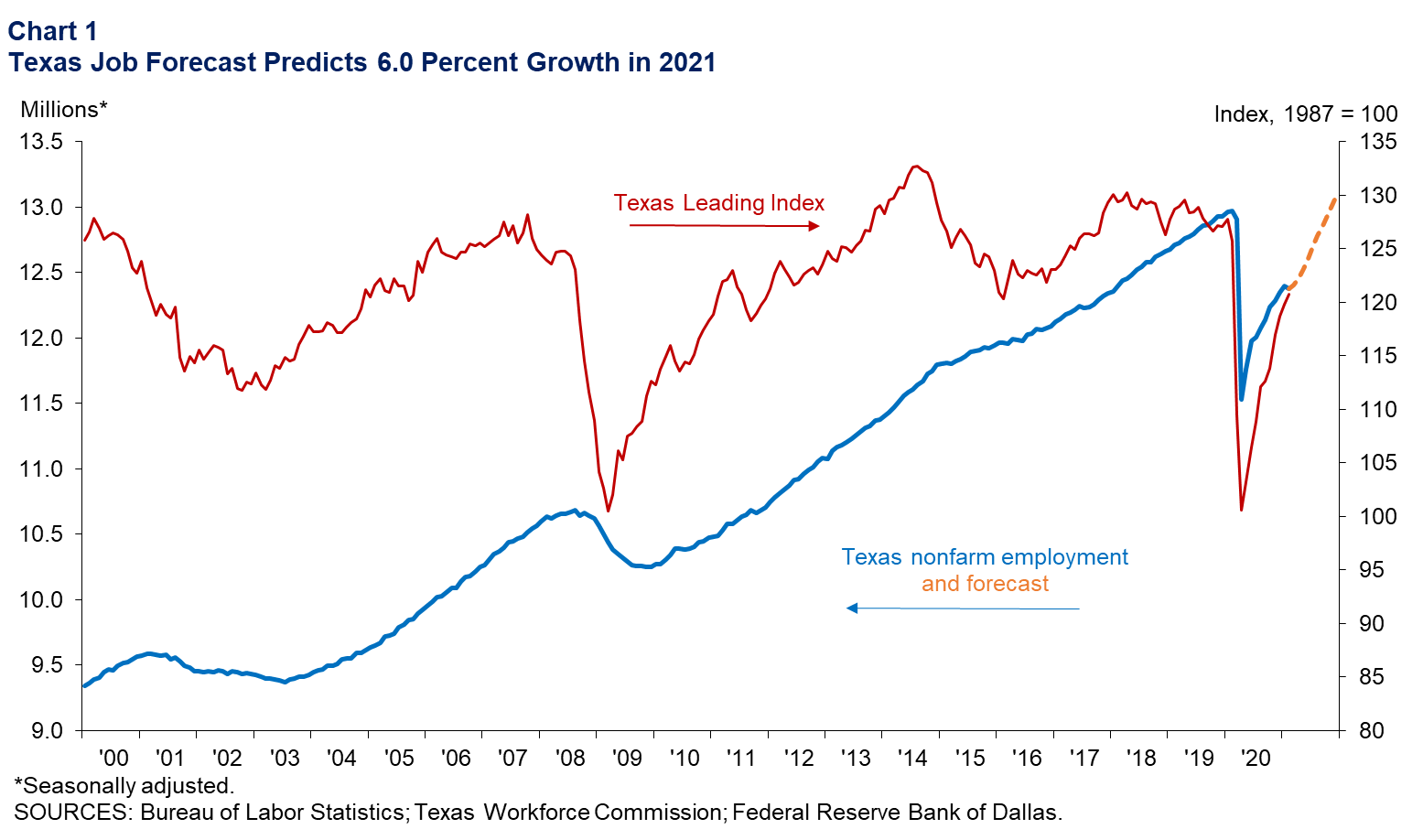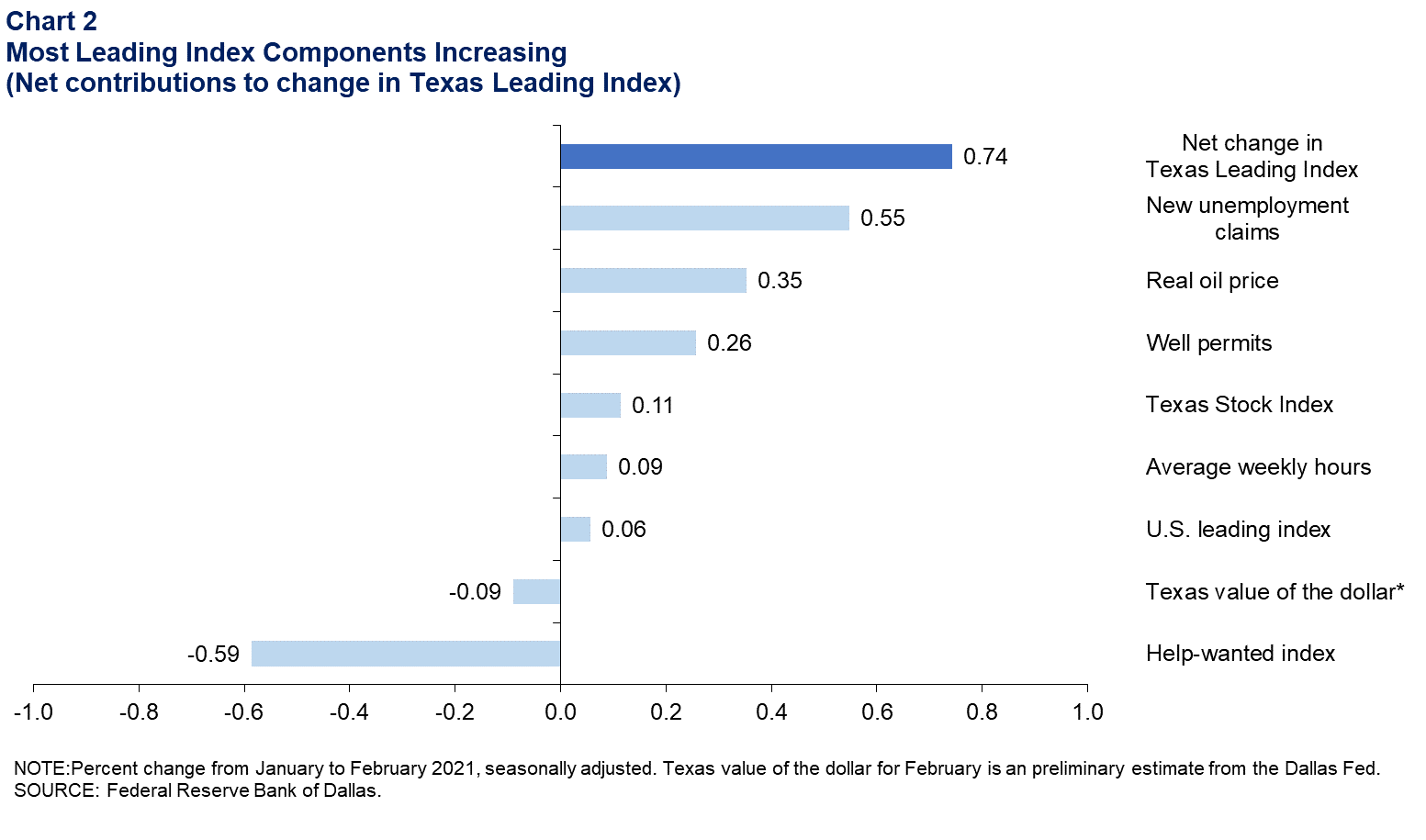Texas Employment Forecast

March 26, 2021
Texas employment declined 1.8 percent annualized in February after increasing a revised 4.5 percent in January. The Texas Leading Index increased for the tenth consecutive month, suggesting continued growth over the next three to six months.
Using a top-down model based on national forecasts, COVID-19 hospitalizations and oil futures prices, we estimate that job growth will increase by 6.0 percent in 2021, with an 80 percent confidence band of 5.0 to 7.0 percent. Based on the forecast, 738,900 jobs will be added in the state this year, and employment in December 2021 will be 13.1 million (Chart 1). The forecast weakened slightly from the 6.5 percent estimated with the release of the January data.
The downward revision to the forecast came from slightly weaker job growth than expected in February and a decline in oil price futures.
“While jobs declined moderately in February, most high-frequency data for the first half of March show signs of a significant improvement in economic activity,” said Keith R. Phillips, Dallas Fed assistant vice president and senior economist. “February employment likely was impacted by Winter Storm Uri, which may have delayed some new businesses from opening and temporarily shut down some businesses due to damage from broken pipes or other storm-related repairs. However, March data on staffing levels and hours worked at small businesses, mobility and engagement, and restaurant reservations all show a pickup in activity.
“As long as COVID-19 cases and hospitalizations continue to decline, we should see further strengthening of job growth going forward.”
The Texas unemployment rate rose slightly from 6.8 percent in January to 6.9 percent in February. The slight increase occurred despite a modest decline in the labor force.
The Texas Leading Index increased for the tenth consecutive month in February (Chart 1). A majority of the eight components gave positive contributions to the index (Chart 2). A decline in new claims for unemployment insurance and increases in the oil price, permits to drill oil and gas wells, the stock price of Texas-based companies, hours worked in manufacturing and the U.S. leading index all contributed positively to the index. An increase in the Texas export weighted value of the dollar and a decline in help-wanted advertising offset some of the positive contributions from the other indicators.


Next release: April 16, 2021
Methodology
The Dallas Fed Texas Employment Forecast projects job growth for the calendar year and is estimated as the 12-month change in payroll employment from December to December.
Due to the rapid onset of the COVID-19 pandemic, the forecasting model used in this release of the Dallas Fed Texas Employment Forecast differs from the model used historically. In this case, payroll employment is estimated based on expectations for U.S. GDP growth for 2021, an estimate of direct COVID-19 impacts from March to May 2020, projected hospitalizations in Texas for COVID-19, and expected prices of West Texas Intermediate crude oil based on the futures curve.
For additional details see dallasfed.org/research/forecast/
Contact Information
For more information about the Texas Employment Forecast, contact Keith Phillips at keith.r.phillips@dal.frb.org or Christopher Slijk at christopher.slijk@dal.frb.org.